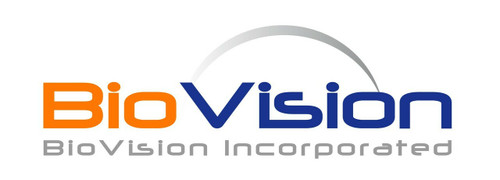Product Description
ACPP, also known as prostatic acid phosphatase isoform PAP, is a type I integral membrane protein of the plasma membrane and lysosomes, and a secreted form also exists. The concentration of ACPP is elevated in the circulation of prostate cancer patients, making the enzyme a marker for the progression of prostate cancer. Recombinant human ACPP, fused to His-tag at C-terminus, was expressed in insect cell and purified by using conventional chromatography techniques.
Biovision | P1066 | Prostatic acid phosphatase human recombinant DataSheet
Biomolecule/Target: ACPP
Synonyms: PAP, 5'-nucleotidase, ACPP, 5-NT, ACP-3, ACP3
Alternates names: soluble CD14, Cluster of differentiation 14, Myeloid cell-specific leucine-rich glycoprotein, Monocyte differentiation antigen CD14
Taglines: N/A
NCBI Gene ID #: 929
NCBI Gene Symbol: CD14
Gene Source: Human
Accession #: P08571
Recombinant: Yes
Source: HEK 293 cells
Purity by SDS-PAGEs: 95%
Assay: SDS-PAGE
Purity: N/A
Assay #2: HPLC
Endotoxin Level: < 0.1 ng/g of protein (<1EU/g).
Activity (Specifications/test method): Determined by the dose dependent activation of NF-kappaB in a RAW264 cell line based reporter system, using a sCD14 concentration range of 20 ng/ul to 200 ng/ul. The NF-kappaB activation is enhanced when the assay is done in the presence of 0.25 ng/ul to 1.0 ng/ul bacterial LPS.
Biological activity: Determined by the dose dependent activation of NF-kappaB in a RAW264 cell line based reporter system, using a sCD14 concentration range of 20 ng/ul to 200 ng/ul. The NF-kappaB activation is enhanced when the assay is done in the presence of 0.25 ng/ul to 1.0 ng/ul bacterial LPS.
Results: N/A
Binding Capacity: N/A
Unit Definition: N/A
Molecular Weight: ~35 kDa
Concentration: N/A
Appearance: Liquid
Physical form description: Sterile filtered through a 0.2 micron filter. Lyophilized from 10 mM Sodium phosphate, pH 7.5.
Reconstitution Instructions: Centrifuge the vial prior to opening. Reconstitute in water to a concentration of 0.1-1.0 mg/ml. Do not vortex. This solution can be stored at 2-8°C for up to 1 week. For extended storage, it is recommended to further dilute in a buffer containing a carrier protein (example 0.1% BSA) and store in working aliquots at -20°C to -80°C.
Amino acid sequence: TTPEPCELDD EDFRCVCNFS EPQPDWSEAF QCVSAVEVEI HAGGLNLEPF LKRVDADADP RQYADTVKAL RVRRLTVGAA QVPAQLLVGA LRVLAYSRLK ELTLEDLKIT GTMPPLPLEA TGLALSSLRL RNVSWATGRS WLAELQQWLK PGLKVLSIAQ AHSPAFSCEQ VRAFPALTSL DLSDNPGLGE RGLMAALCPH KFPAIQNLAL RNTGMETPTG VCAALAAAGV QPHSLDLSHN SLRATVNPSA PRCMWSSALN SLNLSFAGLE QVPKGLPAKL RVLDLSCNRL NRAPQPDELP EVDNLTLDGN PFLVPGTALP HEGSMNSGVV P
 Euro
Euro
 USD
USD
 British Pound
British Pound
 NULL
NULL












